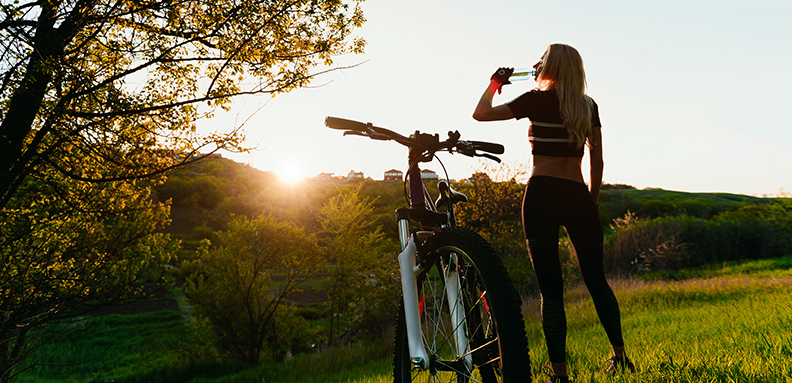
ACTIVE LIFESTYLE IN THE SUMMER HEAT
No matter how you practice to stay in top shape, whether you are hiking, running or cycling, high summer temperatures can put you in a dangerous situation. If you know how to early identify the usual signs of sun stroke and use the following basic heatstroke prevention tips, you will be able to safely arrive at your final destination.
The first step to preventing a sun stroke is to be familiar with its common symptoms:
– Heavy sweating;
– Accelerated heartbeat;
– Fatigue and dizziness;
– Headache.
If you continue the activity despite these warning signs, you increase the possibility of a heat stroke. Heat stroke is a more serious condition that requires immediate medical attention. In addition to the symptoms above, there are other common symptoms:
– Increased body temperature, often higher than 39 °C;
– Confusion, disorientation;
– Dry and red skin;
– Loss of consciousness.
When you start experiencing these symptoms, move under a shade or a cooler place to lower your body temperature and call for help as soon as possible. Keep in mind that rapid rehydration is not recommended in the event of a heat stroke.
Tips for avoiding a heat stroke
- Wear materials that absorb sweat quickly!
To keep your body temperature at a normal level, you need to let the sweat evaporate off your body. Wearing materials that trap heat and sweat on your skin tends to raise your body temperature. Instead wear light clothing made of materials that absorb heat quickly and release heat from your body.
- Drink water!
How much someone sweats varies depending on the individual. However, if you do not make up for the fluids lost through sweating during any activity, dehydration will easily occur. Make sure you are properly hydrated before and during your activity. In extreme weather conditions it is usually recommended to drink two or more bottles of water (500 ml) per hour.
In addition, drinking a sports drink that contains sodium and electrolytes helps replenish the salt lost through sweat, as well as retaining water while you recreate.
- Avoid activity in the hottest part of the day!
Although sometimes impossible, still avoid any strenuous physical activity in the interval from 13:00 to 17:00. Such activities in the early morning are ideal because the temperature is lower, as well as the UV index, which can also help prevent a sun stroke. During the activity, your pace should be constant because your body will have to work harder just to maintain its normal temperature.
- Adapt to the temperatures!
However, if you plan to ride or run in hot weather during the hottest part of the day, you will need to adjust to the climate in order to make things easier. Practice leaving home every day at the same time – both when you leave and when you return home. By maintaining this time rhythm, you will make it easier for your body to cope with all the unwanted problems that can.









